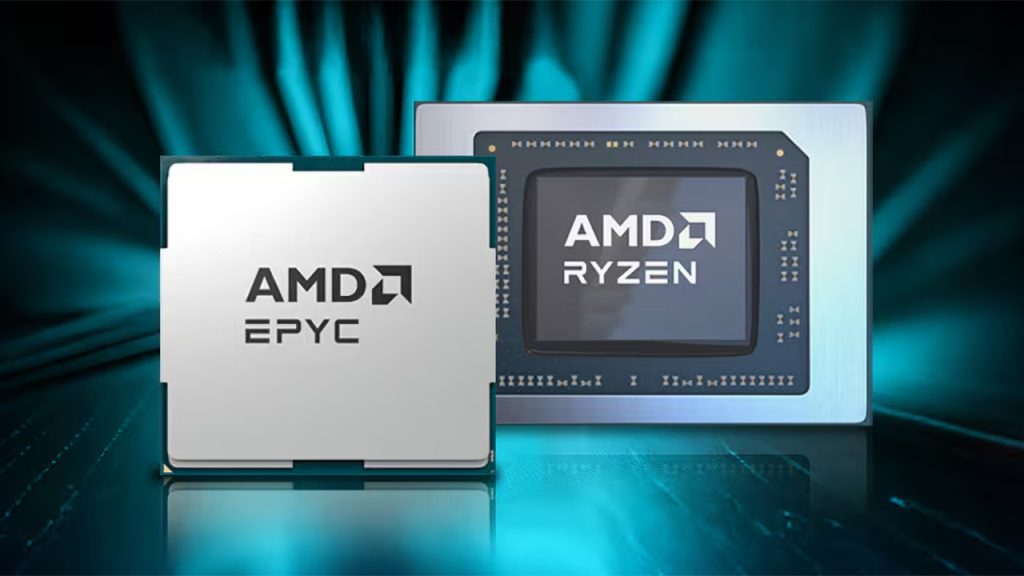In a significant move for the tech industry, AMD announced this week that ASE Technology, the largest outsourced semiconductor assembly and test (OSAT) provider globally, has transitioned to utilizing AMD’s EPYC and Ryzen processors across its data centers and client systems. This shift marks a pivotal moment not only for AMD but also for the future of operational efficiency in high-demand environments.
Performance Gains and Efficiency
The integration of AMD’s advanced processors has yielded notable performance improvements for ASE Technology. According to AMD’s blog, ASE achieved a remarkable 50% increase in system performance along with a 6.5% reduction in power consumption when compared to its prior infrastructure. This optimization translated to a striking 30% decrease in total cost of ownership, highlighting the dual benefits of enhanced operational efficiency and financial savings. Such improvements are essential for ASE, which manages a vast amount of data analysis, particularly related to AI applications for smart manufacturing facilities.
Jekyll Chen, Director of IT Infrastructure for ASE, highlighted the pressing need for high performance and low latency within the company’s operations: “We need to handle a big volume of data analysis, including leading-edge technology for AI applications and our smart factories.” He emphasized that stability and scalability are paramount goals, which the new AMD systems are poised to deliver.
AMD’s Instinct MI300 Series and Future Prospects
A noteworthy aspect of this transition is ASE’s evaluation of AMD’s Instinct MI300 series processors, which are designed for AI workloads. This could signify a considerable step towards leveraging AI capabilities in ASE’s smart factories. AMD has indicated that various companies are increasingly considering its Instinct processors for on-premises AI inference, but ASE stands out as one of the first large-scale confirmations of this intention.
Chen noted the importance of evaluating several critical factors when assessing the AMD systems: “We also evaluated the performance, stability, core count, efficiency, total cost of ownership, AI speed, and multi-tasking capabilities of the new servers.” This comprehensive analysis underscores ASE’s commitment to ensuring that their technological framework aligns with both their operational needs and the demands of digital transformation across their engineering design processes.
Industry Context and Collaborations
ASE Technology has a long-standing partnership with AMD, dating back to 2007, centered around advanced 2.5D packaging technologies. This collaboration has been crucial in developing High Bandwidth Memory (HBM) solutions, which empower various computing applications. However, there remains uncertainty about whether ASE provides packaging services for AMD’s AI GPUs, as the Instinct products typically utilize TSMC’s CoWoS technology for packaging.
According to a report from Gartner, the global semiconductor market is projected to exceed $600 billion by 2025, driven largely by advancements in AI and machine learning. AMD’s successful integration within ASE highlights a broader trend of semiconductor firms pivoting towards AI applications, reflecting the growing demand for robust computing power in data-intensive environments.
Market Response and Implications
The announcement of this collaboration has sparked keen interest within the industry. Analysts suggest that the successful adoption of AMD’s processors by ASE may encourage other large enterprises to consider similar transitions to AMD’s technology. The resulting ripple effect could empower AMD to capture more market share in the high-performance computing and data center segments, where competition remains fierce.
This strategic shift by ASE not only enhances its technical capabilities but also aligns with the broader digital transformation trends observed across various sectors. As companies increasingly rely on smart technologies and AI-driven processes, the implications of such partnerships between semiconductor manufacturers and their clients could be far-reaching.
Quick Reference Table
| Key Item | Statistics |
|---|---|
| Performance Improvement | 50% |
| Reduction in Power Consumption | 6.5% |
| Total Cost of Ownership Decrease | 30% |
| Primary Processor Types Used | EPYC and Ryzen |
| Initial Release Date of Partnership with AMD | 2007 |
| Projected Global Semiconductor Market (2025) | $600 billion+ |
In conclusion, the transition to AMD’s EPYC and Ryzen processors by ASE Technology is a significant development for the tech sector, showcasing performance and efficiency improvements essential for modern operations. As companies navigate the complexities of AI and data processing, such advancements will likely play a critical role in shaping the future landscape of semiconductor technology.

